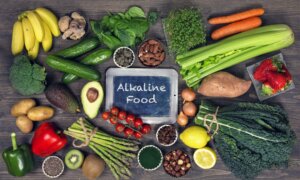In the past, every woman had a cookbook. Usually passed down through generations, the experience of mothers and grandmothers was captured in these treasured kitchen gems, where recipes were time-tested and adjusted to each family’s taste.
Nowadays, we seldom revert to those family heirlooms. Instead, we go online to dip into an overabundance of cooking and baking inspirations. Although fun for some, it can be overwhelming for those who search for healthier options.
Healthy Is Still Delicious
Are you someone who follows recipes to the dot? Do you fear the end product might not be as pictured if you don’t?
As a holistic health practitioner and nutrition coach, I urge you to rethink that expectation. You might be surprised at how small tweaks and adjustments that make a recipe healthier taste better too.
1. Reduce the Sugar
Sugar is detrimental to our health.
According to a study published in Frontiers in Immunology, high sugar intake might be one of the main factors that leads to inflammation in the body. In turn, inflammation negatively impacts other diseases such as inflammatory bowel disease, rheumatoid arthritis, psoriasis, and multiple sclerosis. Furthermore, high sugar intake may foster “high glucose-mediated immune imbalance and tumor development.”
Unfortunately, high sugar consumption can also lead to periodontal disease, cardiovascular disease, and cancer, especially liver cancer.
Avoid Artificial Sweeteners
Substituting cane sugar with other natural sugars such as honey or maple syrup works in some recipes. However, I advise against the use of artificial sweeteners, which are chemical compounds that replace natural sugars in processed foods and beverages.
A 2022 meta-analysis including 3,739,775 subjects from 25 observational studies concluded that “mixed intake of artificial sweeteners could increase the risk of cancer incidence.”
According to the study, aspartame is one of the main culprits. Exposure to the established carcinogen “can cause DNA damage, chromosomal aberrations and mitotic errors.” Aspartame has been shown to increase the occurrence of leukemia and lymphoma, as well as liver and lung cancer in several animal studies.
Another study, published in Current Opinion in Cardiology, examines artificial sweeteners as a possible causal agent for cardiovascular disease, obesity, and Type-2 diabetes.
A More Subtle Sweetness
Artificial sweeteners are also known to be extremely sweet in flavor. We adjust to that strength of taste. Will using natural sweeteners in recipes impart the same flavor?
Be at ease—your tastebuds will adjust to less sweetness. After using fewer and more natural sweeteners in your diet for a while, you will find their more subtle sweetness just as satisfying. It won’t be long before store-bought baked goods will taste almost repulsively sweet.
Regarding online recipes, I begin by cutting the measurement for sugar in half. Sometimes, I even take it down to one-third of the original suggestion. This might take a trial-and-error run on your end, or toning the sugar down over time.
2. Substitute All-Purpose Flour
The Importance of Dietary Fiber
Dietary fiber intake is key to a healthy digestive system. This carbohydrate, which originates in plant food, withstands human digestive enzymes and regulates the gut microbiome through fermentation and the coherent production of beneficial metabolites.
A lack of dietary fiber can contribute to Type-2 diabetes and other metabolic disorders, according to a publication in the journal of Microorganisms.
A 2023 double-blinded randomized placebo trial showed dietary fiber relieves constipation, and a 2023 review printed in the Journal of Agricultural and Food Chemistry marks the importance of dietary fiber in relation to obesity and general digestive health.
Another review published in Medicine in Microecology confirms the significance of dietary fiber consumption, but also highlights the differences in quality, stating, “High-fiber, whole-diet interventions were more effective than fiber supplements in reducing inflammation.”
According to the review, the daily recommended intake of dietary fiber is 28 to 35 grams for adults. It is suggested that it not dip below 25 to 29 grams—however, with an average adult consumption of 20 grams per day, we ingest far too little dietary fiber.
In a nutshell, to utilize dietary fiber as a means to improve one’s health, quality and quantity should be taken into consideration.
Ancient Grains
A comparative
study published in the journal Foods evaluated kernel qualities of ancient grains and modern wheat species and found major differences between them.
Modern hulled wheat varieties displayed a significantly lower protein content, but they were higher in crude fat than their ancient counterparts. Three grains especially stood out in the “total dietary fiber content”: emmer, einkorn, and spelt. Yet, the food industry often uses modern hulled whole wheat flour for added value.
Ultimately, home-baked goods are best, as you have full control over all ingredients used.
Choosing ancient grains has another unexpected advantage. An observational study published in Frontiers in Medicine finds that ancient grains can increase potential tolerability in non-celiac patients who are sensitive to wheat.
On that note, I regularly experiment using a variety of flours—spelt, Khorasan wheat (also known by the brand name Kamut®), einkorn, emmer, buckwheat, rye, oats, and red wheat berries.
Putting it all together—as an example—baking zucchini bread in the height of summer (when I have too many zucchinis in the garden), I used an online recipe but altered it. Instead of using 3 cups of all-purpose flour, I substituted with 2 cups of spelt and 1 cup of buckwheat flour. The bread turned out with a deliciously nutty flavor and great texture. I also lowered the 2 ¼ cups of sugar to 1 cup.
Once again, you must go through a trial-and-error phase to find what suits your palate. Rye flour, for instance, usually makes the dough very dry and results in baked goods that are harder and darker. Spelt acts the opposite way—its doughs become lighter and increase in moisture.
Each grain, and therefore each type of flour, has its distinct qualities. I encourage you to try out a variety and start a new family cookbook for future generations.
3. Add Herbs and Spices
How big is your spice rack? Venturing passed the habitual use of salt and pepper will broaden your palate. With taste and preference changes come health benefits distinct to each spice and herb.
In general, many herbs and spices stimulate the digestive system, leading to better nutrient absorption and decreased flatulence, which in turn is valuable to the eliminatory tract.
Including their anti-microbial, antibacterial, antifungal, anti-cancer, anti-inflammatory, and anti-fungal qualities, culinary herbs have the potential to protect from chronic diseases. Furthermore, herbs and spices positively influence the gut microbiome and are rich in antioxidants.
Rosemary, thyme, oregano, cinnamon, cumin, and bay, for example, were investigated in a comprehensive study that found that these herbs and spices contain 52 phenolic compounds that inhibit enzymes linked to human diseases.
A 2022 study published in Nutrients comments on the infrequent utilization of herbs and spices in cooking and points to their benefits for the human gut microbiota. A deceptive microbiome can lead to dysbiosis, meaning a transition from a healthy gut environment to one that is associated with disease, such as inflammatory disorders or infectious diseases, explains a review published in the British Medical Journal.
Adding herbs and spices, as well as dried fruits and/or vegetables, brings additional health benefits to any home cooking or -baking.
My own spice-rack stores allspice, anise, basil, bay leaves, caraway seeds, cardamon, cayenne, chervil, cilantro, cinnamon, coriander, cloves, cumin (also black cumin seeds), curry, dill, fennel, garlic, ginger, lavender, marjoram, mint, nutmeg, onion, oregano, paprika, parsley, red chili, rosemary, sage, savory, thyme, turmeric, and vanilla.
For instance, a hardy loaf of bread or sourdough is complimented by anise, cumin, or fennel. Sweet breads benefit from cinnamon, cardamon, cloves, or nutmeg. Most of the above-mentioned herbs and spices go well in a variety of cooked dishes—dill with fish, rosemary or thyme with chicken, oregano with beans and red chili for an extra spicy kick.
Try them in any or all of your recipes.
4. Replace Oils
Using high-quality oils can make a huge difference in the end-product of your baked goods or cooked dishes and contribute to making
the outcomes of your work in the kitchen healthier
overall.
A 2023 study published in the journal Nutrients, praises olive oil for its “antioxidant and anti-inflammatory effects.“ Its qualities also prevent ”obesity, diabetes, cardiovascular and neurodegenerative diseases.” Olive oil can regulate very sensitive gut microbes, therefore aiding a healthy microbiome. Furthermore, it improves endothelial function, meaning the oil supports endothelial cells that are responsible for vascular tone, which facilitates blood flow.
Olive oil’s anti-inflammatory, antioxidant, and anticancer traits, especially regarding breast cancer, are featured in a 2022 publication in Molecules. A conference paper points out the oil’s beneficial link to neurodegenerative disorders, such as Parkinson’s disease, which is based on tyrosol, which is a phenolic compound present in extra virgin olive oil.
Another healthy oil comes from flaxseeds.
A 2023 comprehensive review published in the European Journal for Medical Research reports flaxseed oil’s ability to reduce “cardiovascular disease, atherosclerosis, diabetes, cancer, arthritis, osteoporosis, and autoimmune and neurological disorders.” Flaxseed oil is usually sold in light-protective bottles and should be kept and used cool.
Another 2023 study published in Healthcare finds additional benefits of this superfood. Regular consumption, meaning at least a few times a week, “may help to improve lipid profile and lower blood pressure, fasting glucose, and insulin resistance index.”
Of course, there are huge differences in the quality and make-up of vegetable oils. Many oils these days are altered and filler oils might be added to stretch the volume. It is of principal concern to check these markers before using any oils for your cooking and/or baking. Feel free to substitute low-quality oils, like corn oil or soybean oil, with high-quality oils such as olive oil or coconut oil.
For more detailed information on the topic of oils, Epoch TV featured a Facts Matter Exclusive titled “The Toxic Truth About Vegetable Oils in Your Home.” The Epoch Times has reported frequently as well.
5. Keep It Simple
This last point is short and simple: Cook and bake at home. Using the fewest,
most natural, and highest-quality ingredients possible has several benefits:
- A de-cluttered pantry, freed from boxes of processed food, replaced by simple staples like flour, nuts and seeds, herbs and spices, grains, oils, etc.
- Straightforward cooking and baking—for instance, to make bread, you need only three ingredients: high-quality flour, water, and salt (sometimes yeast or sourdough).
- The best-tasting and healthiest results.
And maybe you want to start a new hand-written cookbook, which will be passed down to the next generations in your family, ensuring their well-being and consciousness regarding healthy ingredients.














